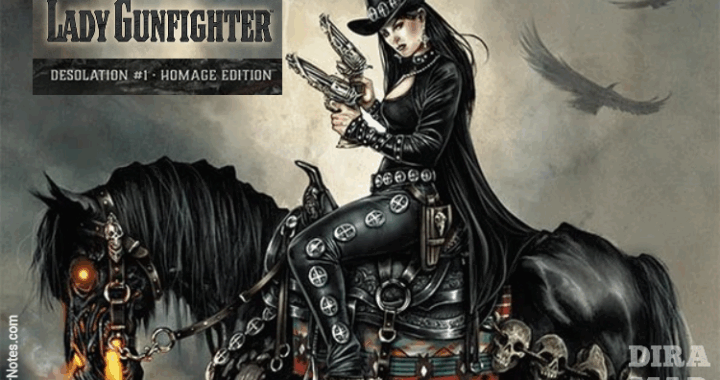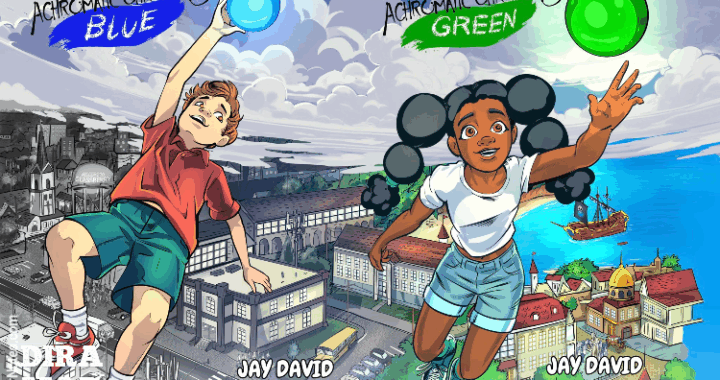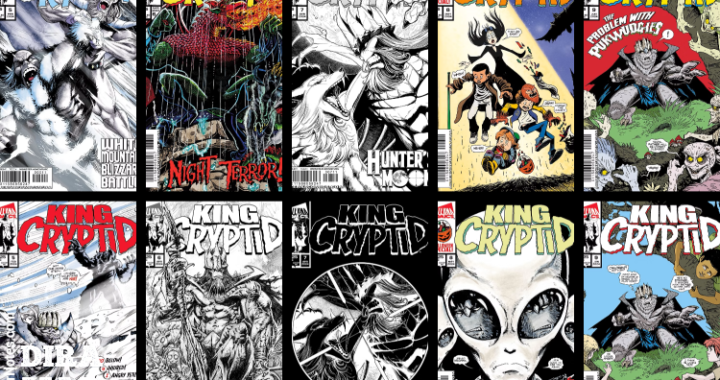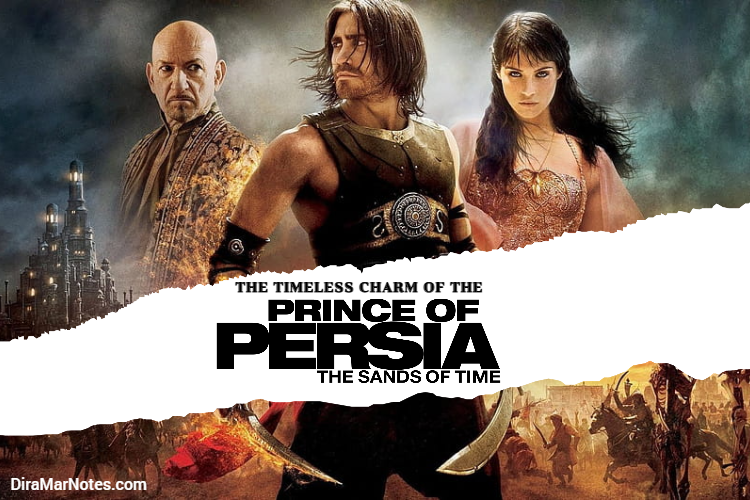
THE TIMELESS CHARM OF THE PRINCE OF PERSIA
In the wide array of movie experiences, certain films surpass the idea of being a one-time watch and transform into a source of repeated enjoyment. To me, “Prince of Persia: The Sands of Time” (2010) is one of those unique movies that lets me escape into a fictional world whenever I want.
At its core, “Prince of Persia: The Sands of Time” (2010) unfolds the story of a young fugitive prince, played by Jake Gyllenhaal, and a courageous princess, played by Gemma Arterton, compelled to join forces in a race against time.
Little did I know that this cinematic gem would weave a captivating tale that would stand the test of time becoming one of my favorites, far surpassing the fleeting trends of current-day pop culture and entertainment.
THE STORY
Prince of Persia: The Sands of Time released in 2010 is a thrilling fantasy action adventure that follows the story of Dastan, a young and agile fugitive prince played by Jake Gyllenhaal. The film starts with a narration by Tus, played by Richard Coyle.
The narrative unfolds in the mystical and ancient Persian empire, where Dastan finds himself entangled in a grand conspiracy, where deceit and betrayal threaten the destruction of two kingdoms, the Persian empire and the sacred city of Alamut.
After obtaining a powerful dagger capable of manipulating time, Dastan, alongside Tamina Princess of Alamut played by Gemma Arterton, embarks on a journey to return the dagger to its rightful place while fighting against an unknown enemy.
The dagger possesses the ability to reverse time, a power that could have catastrophic consequences if misused. As the pair embarks on a perilous journey to prevent a cataclysmic event, they face treacherous landscapes, engage in thrilling acrobatics, and discover the true strength of their alliance.
The film, directed by Mike Newell, seamlessly blends elements of action, comedy, romance, and fantasy against the backdrop of ancient Persia. With breathtaking visuals, authentic real-location settings, and a captivating storyline, “Prince of Persia: The Sands of Time” immerses viewers in a world of magic, intrigue, and high-stakes adventure.
The allure of the film lies not only in its compelling narrative but also in the meticulous attention given to details, from the amazing locations, the realistic portrayal of animals, the parkour choreography and stunts, the commando-style combat, to the carefully crafted costumes and weapons.
As the characters grapple with the consequences of their choices and the manipulation of time, the film explores profound themes, making it a timeless cinematic journey that continues to captivate audiences.
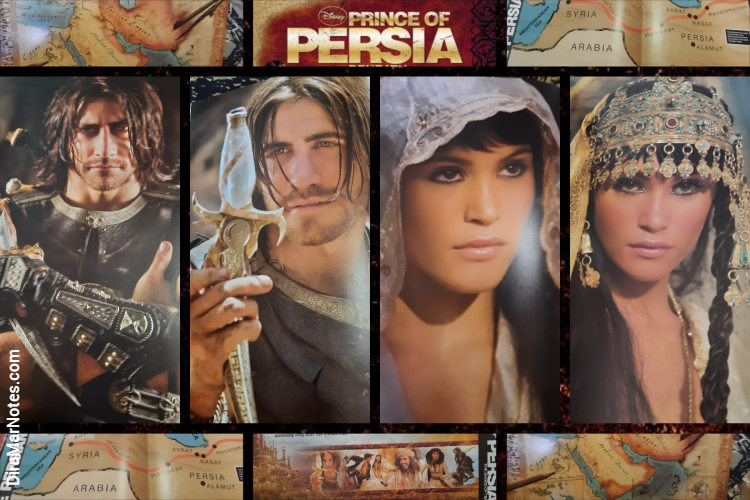
ENCHANTED BY THE WORLD
The enchanting world of “Prince of Persia: The Sands of Time” is not merely a product of advanced visual effects and CGI wizardry; it is a testament to the filmmakers’ commitment to authenticity.
What was pretty much normal a decade ago. Unlike the prevalent trend of relying heavily on virtual effects, this cinematic masterpiece took the bold route of shooting in Morocco, immersing the audience in the breathtaking landscapes of the country.
They filmed in challenging weather and contributed to the local economy by hiring local artists to work on the costumes and hiring a large number of extras to act in the film. It’s great to see how everyone was so enamored by the landscapes, the people, and the culture of Morocco.

The arid deserts and ancient citadels captured on film not only provide a visually stunning backdrop but also evoke a sense of tangible reality, connecting viewers more intimately with the mystical world of ancient Persia.
Furthermore, the decision to feature real animals in the film enhances the immersive experience, as the authenticity of their presence adds a layer of genuine allure to the narrative. This dedication to tangible elements over digital constructs contributes to the film’s enduring charm, making it a rare gem in the era of CGI-dominated cinematic spectacles.
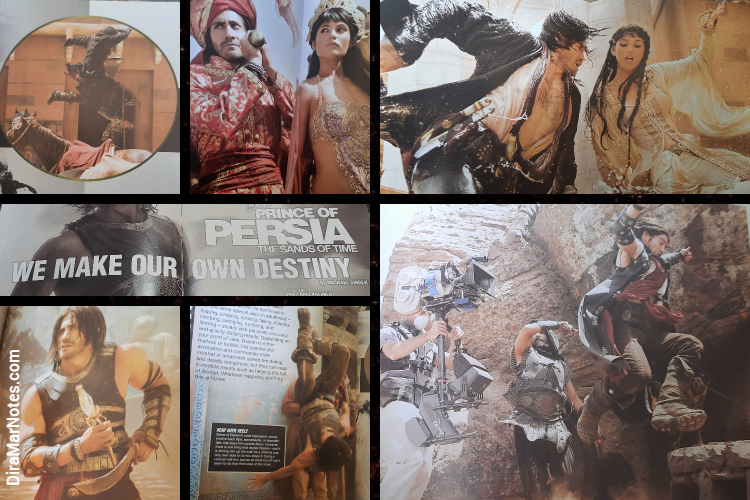
This ancient Persian adventure along with the ancient Egyptian adventures called “The Mummy” (1999) and “The Mummy Returns” (2001) became my go-to remedy, a reliable source of comfort that never fails to heal the mundane aches of life and offers a much-welcomed distraction from the complexities of the world.
Despite having no prior exposure to the video games or any knowledge about the property, at the time I approached the film with a fresh set of eyes and was enchanted.
THE COSTUMES AND THE WEAPONS
The filmmakers focused on making everything look amazing. They paid a lot of attention to the little things, like the costumes the characters wore and the weapons they used.
The filmmakers put in the effort in recreating the attire of characters, ensuring that each costume not only reflected the aesthetic richness of ancient Persia but also conveyed the personality and journey of the characters wearing them.
The result is a wardrobe that seamlessly blends historical accuracy with a touch of fantasy, elevating the film’s visual appeal to new heights.
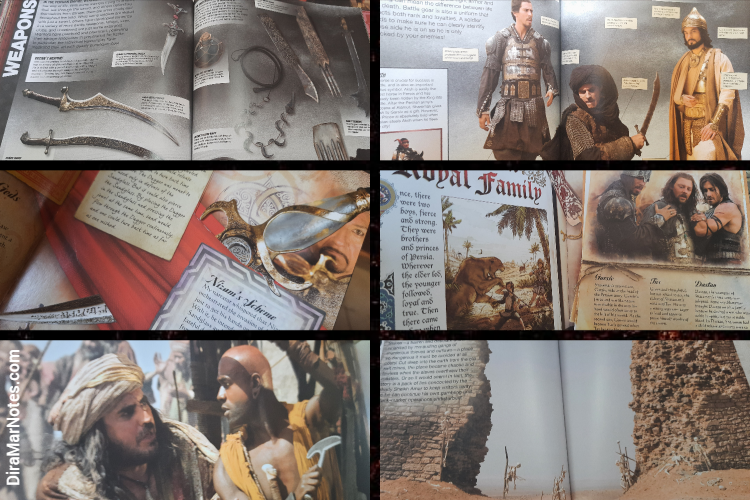
Similarly, the weapons in the film were not mere props; they were intricately designed and crafted to mirror the craftsmanship of a bygone era. From the iconic dagger central to the plot to the weapons wielded in epic battle sequences, every element was thoughtfully considered.
This dedication to authenticity in the creation of the film’s tangible elements adds an extra layer of depth to the immersive world of “Prince of Persia,” allowing audiences to not just witness the adventure but to feel a part of the ancient journey.

THE THEMES IN PRINCE OF PERSIA
Beyond the surface-level action and fantasy, the film delves into profound themes and invites viewers to reflect on their journey through the sands of time, urging them to consider the significance of the moments that shape their destinies. Here are some prominent themes in the film:
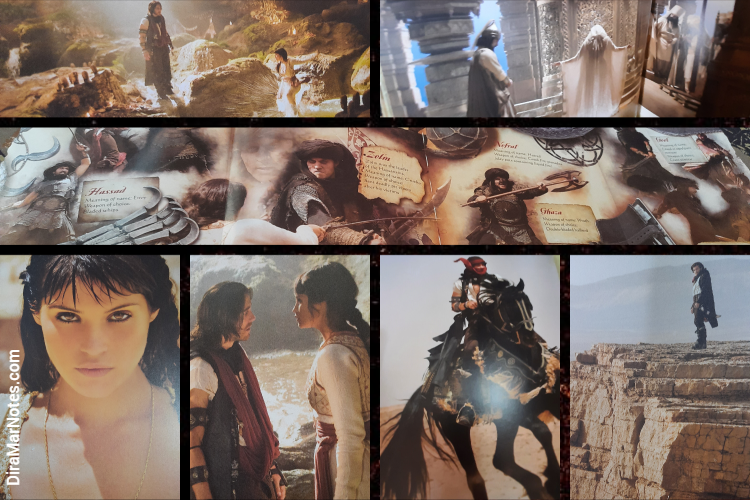
TIME AND DESTINY
At the core of the storyline is the theme of time manipulation. The magical dagger, capable of reversing time, becomes a powerful symbol as characters grapple with the consequences of their actions and the inevitability of destiny. Manipulating time and time travel are popular themes in movies.
In this story time manipulation is needed to change destiny to gain power. Destiny can be written on stone but the film pushes the notion that we as human beings make our destiny by the choices we make in life.
BETRAYAL AND LOYALTY
The narrative is marked by betrayal and loyalty. The Persian empire according to the story was based on principles of loyalty and brotherhood. Dastan, the protagonist, must navigate a world where allegiances are tested, and characters must discern whom to trust in their quest to prevent a malevolent plot.
POWER AND CORRUPTION IN THE PRINCE OF PERSIA
The pursuit of power and the corrupting influence it can have is a central theme in the film. The antagonist, Nizam, seeks ultimate power through the Sands of Time, highlighting the dangers of unchecked ambition.
REDEMPTION IN THE PRINCE OF PERSIA
The characters in the film grapple with their pasts and seek redemption. Dastan, in particular, undergoes a transformative journey as he strives to make amends for his actions and prove his worthiness to Tamina.
LOVE AND SACRIFICE IN THE PRINCE OF PERSIA
The relationship between Dastan and Princess Tamina is marked by love and sacrifice. But way too much time is wasted with the “I can’t stand you” phase. Tamina is hellbent on fulfilling her duty to save her people and the world. Her faith and the love for her people is what drives her to fulfill her destiny.
Their alliance becomes pivotal in the face of a looming threat during the “I like you” phase. Tamina realizes that she must share her duty with Dastan and the only way to do that is to sacrifice herself for him to be able to fulfill his destiny. By doing that she forces Dastan to undergo the feeling of loss of what could have been as they never got the chance to even express that they don’t hate each other anymore.
PERSPECTIVE AND TRUTH
The film explores the importance of perspective and the revelation of truth. Characters must navigate through deception and partial truths to uncover the reality behind the unfolding events.
FREEDOM AND DUTY
Dastan’s struggle with his identity as a prince and his desire for personal freedom versus his duty to protect the kingdom adds complexity to the character dynamics and underscores the tension between individual desires and societal obligations.
These themes, combined with action-packed sequences and a richly detailed world, contribute to the enduring appeal of “Prince of Persia: The Sands of Time.” The film transcends the fantasy adventure genre by delving into universal and thought-provoking themes that resonated with me.
AVOIDABLE OR UNAVOIDABLE ISSUES?
Making a movie is never a smooth ride, no matter how big or small it is or what type of movie it is. Filmmakers always face problems and tough situations during the making of a film. Some problems are just part of the deal, while others could maybe be avoided.
THE PRINCE OF PERSIA’S CASTING CONTROVERSY
One major criticism was the casting of Jake Gyllenhaal as the lead character, Dastan. The choice of a non-Persian actor for a character in a story set in ancient Persia sparked accusations of whitewashing, leading to concerns about cultural representation. This is one of the reasons that today’s entertainment is the way it is.
Maybe he did a good job at the audition. What if his performance was better than a Persian actor? Today the role would have gone to a Persian actor even if he couldn’t act. In the end, the cast looked the part so I didn’t see a problem.
THE PRINCE OF PERSIA’S SCRIPT AND DIALOGUE
The screenplay received criticism for its lackluster dialogue and predictable storyline. Many found the plot to be formulaic and felt that the script didn’t bring anything new or exciting to the table. This is a valid criticism but honestly, it didn’t bother me.
It’s strange how things have changed and people now want to go back to the formulaic plots, especially in the action genre.
The film was criticized for its uneven pacing, with some scenes feeling rushed while others dragged on. This impacted the overall flow of the narrative and made it challenging for some viewers to stay engaged. I didn’t have a problem with staying engaged but everyone is different so maybe it could be true. I can see it happening for some people when they are walking in the desert or during the sandstorm scene.
LACK OF CHEMISTRY IN THE PRINCE OF PERSIA
Some viewers felt that there was a lack of chemistry between Dastan and Tamina. I disagree. They hated each other in the beginning and slowly started to get to know each other as the film progressed. It’s not an instant romantic connection like with Eve and Rick from “The Mummy” (1999).
INACCURACIES IN THE PRINCE OF PERSIA
Fans of the original “Prince of Persia” video game series noted significant deviations from the source material. Changes to the story and character dynamics disappointed some fans who were expecting a more faithful adaptation. It’s tough to turn video games, anime, cartoons, novels, and comics into real-life movies.
There’s often something unique in these sources, especially in anime and video games, that doesn’t work well when brought to the big screen so changes need to be made but more than often, they are not welcome. Anime adaptations with bombastic facial expressions and intense action scenes are difficult to replicate beat by beat.
WAYS TO ADAPT
The original material usually remains the best source of storytelling, but adaptations can still be good in their own way, especially when the storytellers respect the original material and try to make their version.
I always go back to the Telenovela Corazón Salvaje (1993) starring the late Eduardo Palomo and Edith Gonzales. It was slightly based on the 1950s novels by Caridad Bravo Adams and before it, there were two versions of the telenovela (1966 and 1977) and the 1956 and 1968 films based on the books.
The 1993 version took the main characters and kept some of their characteristics but also made some changes that allowed to characters to develop beyond the story in from novels. They were placed in different locations and faced different situations. It was amazing! So much so that even after 30+ years it is still regarded as the best adaptation.
I didn’t know about the Prince of Persia video game, so the movie was just a fun and entertaining action adventure for me. I guess not knowing the details worked in my favor in this case.
CGI AND SPECIAL EFFECTS IN THE PRINCE OF PERSIA
While the film had an ambitious scope with its action sequences and special effects, some critics found the CGI to be overused and at times unrealistic, detracting from the overall viewing experience.
It didn’t take me away from the movie since I was engaged with the story and I didn’t feel like it was overused like in the 2017 Mummy remake. They work with practical effects something current-day filmmakers avoid using. Instead, they choose to use CGI for the most part even though it seems more expensive in some cases.
STEREOTYPICAL CHARACTERS IN THE PRINCE OF PERSIA
The characters in the movie were criticized for being one-dimensional and conforming to stereotypes, particularly in their roles and relationships within the narrative.
One-dimensional characters are known as flat characters or characters in fictional stories that do not change much from the start of the story to the end. When a character is one-dimensional, he or she does not demonstrate a sense of learning in the course of a story.
Considering the many themes that the film covers and the journey the main characters go through I don’t see them as one-dimensional.
TAMINA
Tamina is a complex woman and she is annoying in the beginning. She was raised to fulfill a religious duty that is bigger than herself. The things that she must have gone true as the sole protector of the dagger are unimaginable.
She is clever, contentious, courageous fiercely loyal to the people of Alamut, and never afraid to speak her mind. However, she is quick to judge people on appearances and turns hostile very quickly to those she considers undeserving. She learns that there is more than meets the eye.
DASTAN
Dastan starts as a simple single-minded guy even though he is a prince. He is spirited, courageous, cunning, and confident. Dastan has a sense of adventure with a sense of justice and compassion for the people.
He initially despises Tamina. They have a constant banter because they can’t stand each other. However, Dastan gradually changes his perception of her and starts to like her. His life gets more complicated once he realizes the betrayal of someone close to him and has to learn quickly how to deal with it.
SHEIKH AMAR
Sheikh Amar, played by Alfred Molina, is an interesting character who believes taxes are evil. He is an amoral entrepreneur. His right-hand Seso played by Steve Toussaint is a loyal honorable skillful warrior who pledged allegiance with the Sheikh because he saved his life, and seems to act as the good side of his conscience that he constantly is in conflict with. His decision to help Dastan is influenced by Seso.
TUS AND GARSIV
Tus seems to live a comfortable life as the heir to the throne of the Persian empire. He has a certain perspective on life. It’s a very short moment but he gets the shock of his life when he sees one of his brothers die in front of him.
He and Garsiv seem to easily accept that Dastan committed a crime and betrayed them. I would have expected a more emotional reaction. However, they seem to react differently by the end and by then it looks more like a brotherhood than before.
THE VILLAIN WERE VILLAINS
One argument for one-dimensional characters that I would accept was the villains in the story. They were simply bad. There were no underlying layers or an antihero storyline to justify the crimes they committed or make the viewer feel sorry for them. It’s so refreshing to see villains being villains.
LEGACY OF THE PRINCE OF PERSIA
Unfortunately, the film did not do well at the box office. I imagine there were comparisons to the game but as I mentioned I have no exposition to the video game. As a standalone movie, it was a decent movie and to me it was entertaining.
The movie has a great score composed by Harry Gregson-Williams which supports the story being told. Mike Elizondo and Alanis Morissette provide the credits ballad “I Remain,” a surprisingly strong single that sounds like it was written to complement the film, rather than the other way around.
The sound has some similarities to “The Mummy” (1999) which is probably why I liked it so much. I miss how movies like The Pink Panther (1963), Star Wars (1977), Superman (1978), Ghostbusters (1984), and Mission Impossible (1996) had awesome music that you instantly associate with the film.
Fans, both new and existing, discovered the film’s charm and timeless narrative, leading to strong physical media sales of DVDs, Blu-rays, books, and other merch, that defied the initial box office disappointment.
Unfortunately, the success in physical media sales came too late to revive discussions of a sequel, leaving “Prince of Persia: The Sands of Time” as a standalone gem in the cinematic landscape, appreciated more deeply with home viewings than it was on the bustling theater screens.
Thinking about all the effort it takes to create the majestic sets, costumes, and armory, it makes sense why they decided to scrap the Prince of Persia sequel based on the box office results even though there were still more adventures that could have been explored.
But then, I look at a movie like “Wrath of Titans” (2012), the sequel to “Clash of Titans” (2010) and I can’t help but wonder why this project got approved at the time and not the sequel for the Prince of Persia.
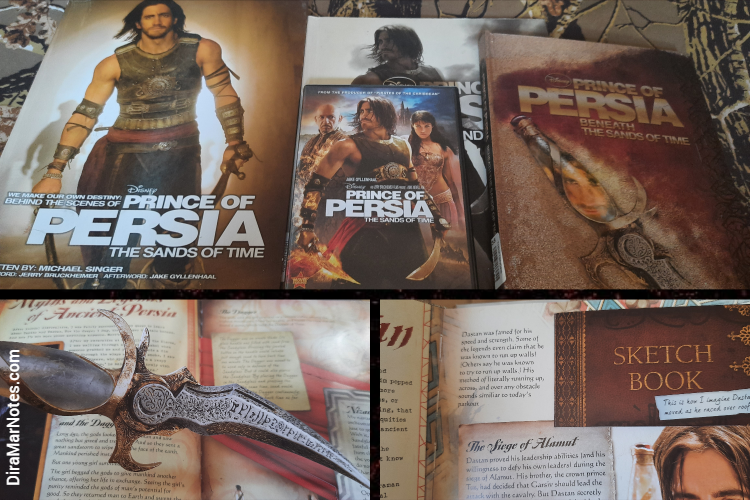
FINAL THOUGHTS
“Prince of Persia: The Sands of Time” is not merely a cinematic experience; it is a voyage with a timeless charm. The characters, portrayed by Jake Gyllenhaal and Gemma Arterton, resonated with me, transcending the boundaries of a mere adventure flick.
Their struggles, triumphs, and the overarching theme of time’s influence on destiny kept me engaged. For fans like me, it has become a cherished remedy, a sanctuary where the troubles of the world momentarily fade away, and the magic of storytelling takes center stage.
Similar to The Mummy (1999) and The Mummy Returns (2001), what makes this film particularly special is its ability to entertain offering a welcomed distraction and escapism in times of need. Like a trusted companion, it beckons you to visit a world, providing a passport to spellbinding entertainment that stands the test of repetition. The breathtaking visuals, action scenes, and a stirring musical score ensure that the film retains its charm no matter how often one watches it.
The behind-the-scenes segment where they show the effort that was put into the movie makes me appreciate it even more. There are also several books about the movie including a visual guide, a condensed behind-the-scenes book, and the journal “Beneath the Sands of Time” in the form of a scrapbook of an archeologist named Morgan Way uncovers the mystery of the Sands of Time. The journal includes maps, interactive elements, and essential information that allows you to take a trip to the mythical land of Persia.
As I continue to watch it over the years, the film’s charm remains undiminished, a testament to the filmmaking which compared to recent films seems way better.
My Rating: objectively 7/10, biased 10/10
All images in this publication belong to the original creators and are used as references under fair use.

